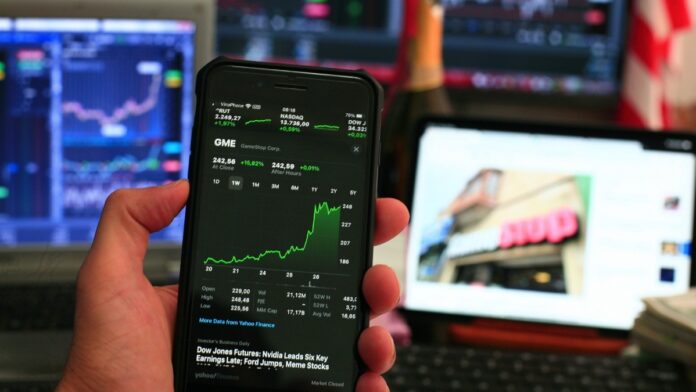Wall Street stocks ended higher on Tuesday, with Apple rising and Nvidia dipping as investors assessed consumer sentiment data and bet on a more flexible trade policy stance from the Trump administration next week. U.S. President Donald Trump said on Monday that automobile tariffs were coming soon, while suggesting that not all proposed tariffs would be enforced in an April 2 announcement on which Wall Street is focused.
“I don’t expect that we’ll get the clarity that the market is hoping for, but investors are desperate for any sort of clarity on this front, and to the extent they’ll get some of it, it’s a huge day,” said Ross Mayfield, an investment strategist at Baird.
ALSO READTrump’s World Liberty Financial crypto venture to launch stablecoin
Weighed by worries that Trump’s tariffs would fuel inflation and hurt economic growth, the S&P 500 is down about 2% so far in 2025, and it is on track for its first quarterly loss since June 2023. Ratings agency Moody’s said on Tuesday that the United States’ fiscal strength is on track for a continued multiyear decline as budget deficits widen and debt becomes less affordable. Another report revealed a dip in consumer confidence, with the index falling to 92.9 in March – its lowest since February 2021.
Apple rose 1.4%, helping keep the Nasdaq in positive territory, while Nvidia slid 0.6%.
Tesla shares rose 3.45%, adding to a 12% rally the previous day. The company’s market share in Europe continued to shrink in February as sales of the all-electric car maker dropped for a second month, even as EV registrations overall on the continent grew.
KB Home fell over 6% after the homebuilder cut its full-year 2025 revenue forecast.
The S&P 500 climbed 0.16% to end the session at 5,776.65 points.
The Nasdaq gained 0.46% to 18,271.86 points, while the Dow Jones Industrial Average rose 0.01% to 42,587.50 points.
ALSO READMarkets end flat after Sensex swings 700 points intraday; Tech shines, pharma slumps
Of the 11 S&P 500 sector indexes, seven rose, led by communication services, up 1.43%, followed by a 0.98% gain in consumer discretionary. Fed Governor Adriana Kugler said the central bank’s interest rate policy remains restrictive, but progress on bringing inflation back to the central bank’s 2% target has slowed.
» Read More


